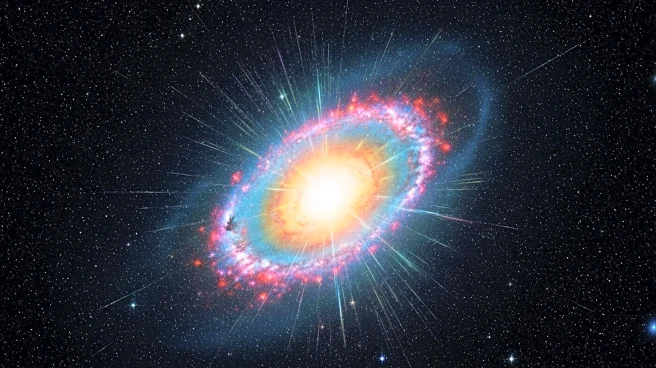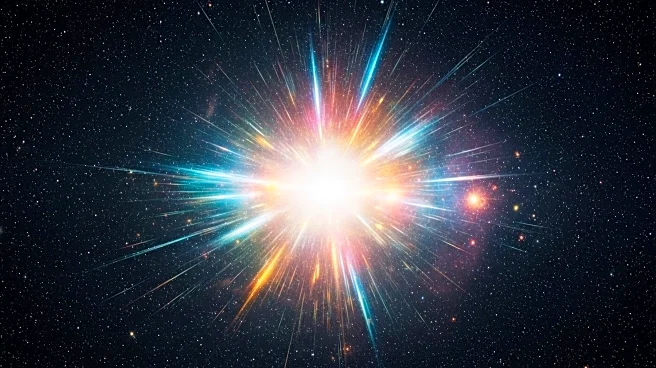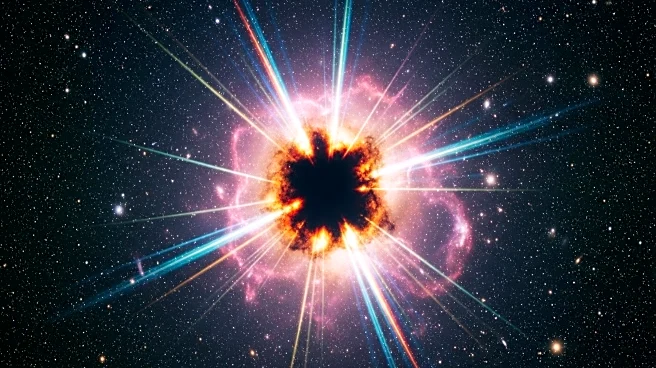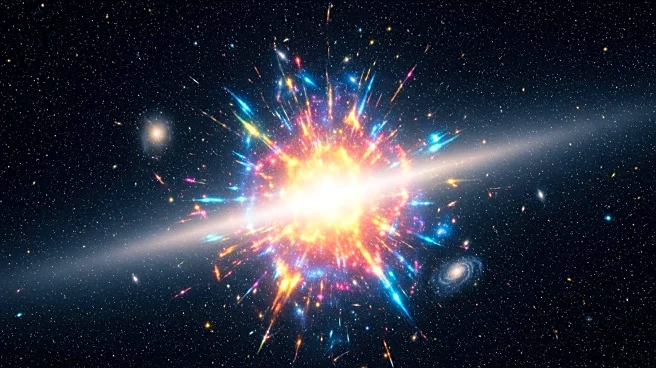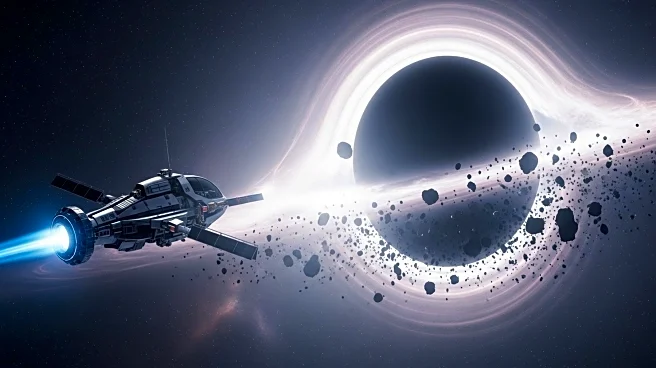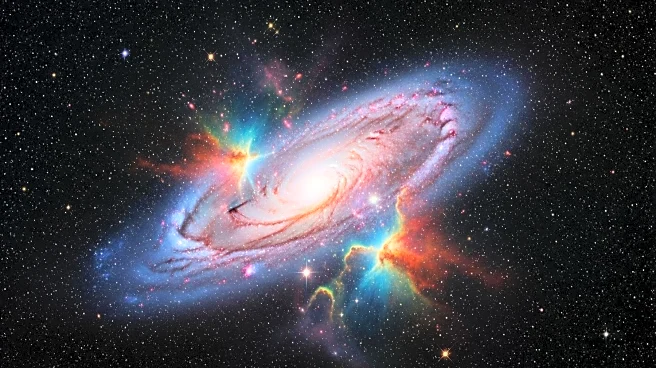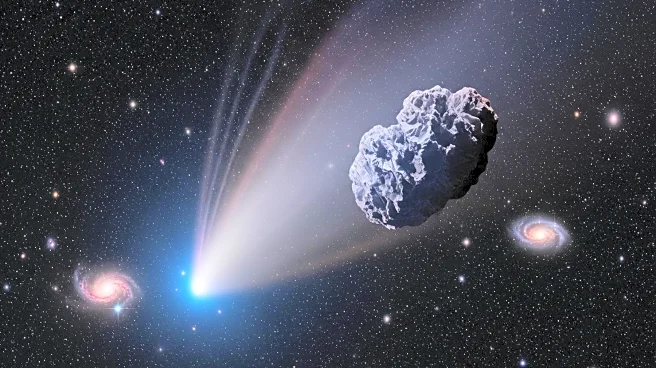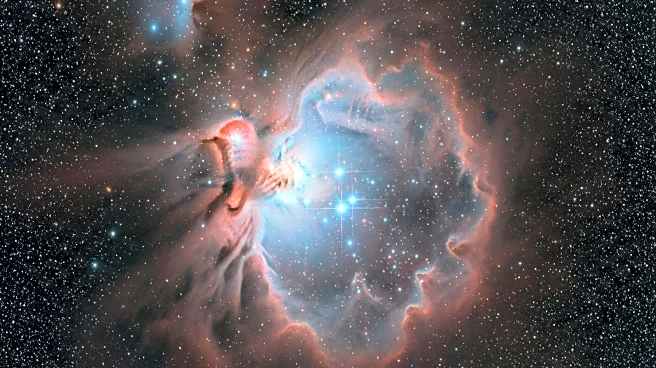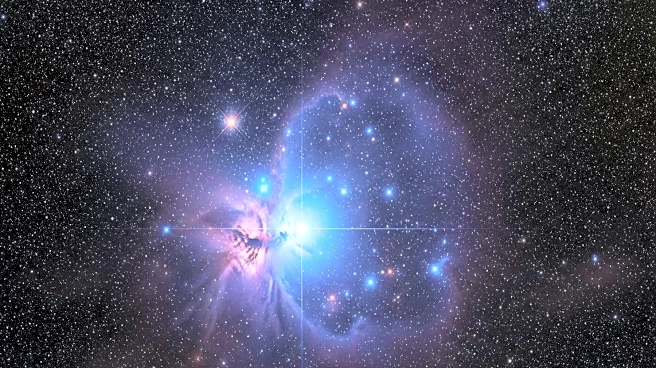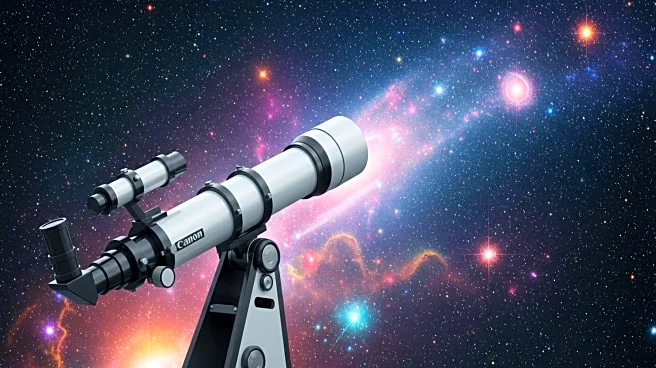What's Happening?
Astronomers have identified a gamma-ray burst, GRB 250702B, that lasted for an unusually long duration of about a day, originating from a galaxy several billion light-years away. This event is unlike any previously observed gamma-ray bursts, which typically last from milliseconds to several minutes. The burst was first detected by NASA's Fermi Gamma-ray Space Telescope and later confirmed by the Einstein Probe team. Researchers, led by Dr. Antonio Martin-Carrillo, suggest that the burst may involve a white dwarf being affected by an intermediate black hole, a rare and poorly understood class of black holes. The team continues to monitor the event to understand its origins.
Why It's Important?
The discovery of GRB 250702B challenges existing theories about gamma-ray bursts and their sources. Typically, these bursts are associated with massive stars exploding in supernovas or being torn apart by black holes. The prolonged duration of this burst suggests a different mechanism may be at play, potentially involving intermediate black holes. Understanding this phenomenon could provide new insights into the behavior of black holes and the dynamics of distant galaxies. It also highlights the importance of continued observation and collaboration among international space agencies to unravel cosmic mysteries.
What's Next?
Researchers will continue to observe GRB 250702B using various telescopes, including the Hubble Space Telescope, to gather more data on its characteristics and origins. The scientific community may explore new theoretical models to explain the unusual duration and nature of this gamma-ray burst. Further studies could lead to advancements in our understanding of black holes and their interactions with other celestial bodies.
